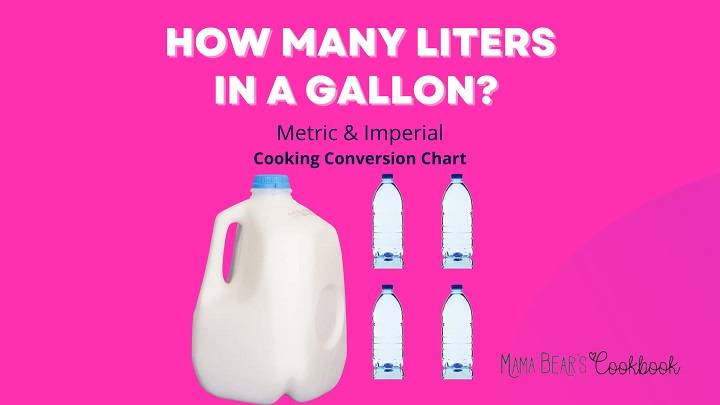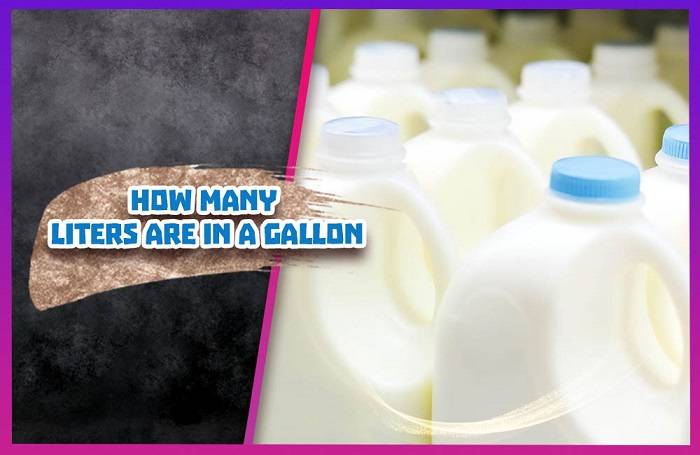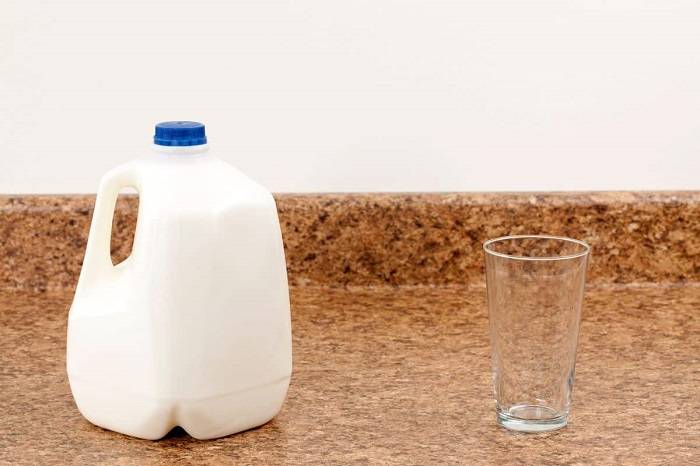Understanding measurements and conversions is essential in everyday life, whether you’re cooking in the kitchen, working on a science project, or simply trying to make sense of different systems of measurement. One of the most common questions that arises in both culinary and scientific contexts is: “How many ounces are in a liter?” This seemingly simple question opens up a broader discussion about measurement systems, their usage, and how to accurately convert between them. In this comprehensive guide, we’ll explore the answer to this question, delve into the history and significance of measurement systems, provide practical examples of conversions, and offer tips on how to make these conversions easy and accurate.
Understanding Measurement Systems
The Metric System
The metric system, also known as the International System of Units (SI), is a decimal-based system of measurement that is used globally in most countries. The system is designed to be simple and consistent, with units based on multiples of ten. The liter (L) is the unit of volume in the metric system and is commonly used in various applications, including science, medicine, and everyday measurements, especially in countries that have adopted the metric system as their standard.
The Imperial and U.S. Customary Systems
In contrast to the metric system, the Imperial and U.S. customary systems are used primarily in the United States and a few other countries. These systems are based on historical British units and have their own distinct set of measurements for volume, length, weight, and more. In the U.S. customary system, fluid ounces (fl oz) are the standard unit of volume used for measuring liquids, such as beverages, cooking ingredients, and other fluids.
Differences Between the Systems
One of the key differences between the metric system and the Imperial/U.S. customary systems is the basis of measurement. The metric system is based on powers of ten, making it easier to convert between units (e.g., milliliters to liters). On the other hand, the Imperial and U.S. customary systems are not as straightforward, with conversions often requiring memorization of specific conversion factors.
For example, in the metric system, 1 liter is equal to 1,000 milliliters, and converting between these units is as simple as moving the decimal point. In the U.S. customary system, converting between ounces and other units of volume can be more complex due to the non-decimal nature of the system.
How Many Ounces Are in a Liter?
The Conversion Factor
To accurately determine how many ounces are in a liter, it’s important to understand that there are two types of fluid ounces: the U.S. fluid ounce and the Imperial fluid ounce. These two units are slightly different in volume, so the conversion factor will depend on which system you are using.
- U.S. Fluid Ounces:
1 liter = 33.814 U.S. fluid ounces (fl oz) - Imperial Fluid Ounces:
1 liter = 35.195 Imperial fluid ounces (fl oz)
These conversion factors are crucial when working with recipes, scientific measurements, or any situation where precise volume conversions are required.
Why the Difference?
The difference between U.S. fluid ounces and Imperial fluid ounces stems from historical differences in measurement systems. The Imperial system, which was widely used in the British Empire, was standardized in 1824, while the U.S. customary system, which evolved from earlier British units, developed separately. As a result, the U.S. fluid ounce is slightly smaller than the Imperial fluid ounce, leading to different conversion factors for liters.
Examples of Conversions
Let’s look at a few examples to better understand how to convert liters to fluid ounces in both the U.S. and Imperial systems:
- Example 1: Converting 1 Liter to U.S. Fluid Ounces
- 1 liter = 33.814 U.S. fluid ounces
- Example 2: Converting 2 Liters to Imperial Fluid Ounces
- 2 liters = 35.195 * 2 = 70.39 Imperial fluid ounces
- Example 3: Converting 0.5 Liters to U.S. Fluid Ounces
- 0.5 liters = 33.814 * 0.5 = 16.907 U.S. fluid ounces
- Example 4: Converting 3 Liters to Imperial Fluid Ounces
- 3 liters = 35.195 * 3 = 105.585 Imperial fluid ounces
These examples highlight the importance of using the correct conversion factor based on the measurement system you are working with.
Practical Applications of Liter-to-Ounce Conversions
Cooking and Baking
One of the most common scenarios where you might need to convert liters to ounces is in cooking and baking. Recipes often include measurements in both metric and U.S. customary units, especially in cookbooks or online recipes that cater to an international audience. Understanding how to convert between liters and ounces ensures that your recipes turn out correctly, whether you’re making a soup, sauce, or cake.
For example, if a recipe calls for 1 liter of water and you’re using a measuring cup that only shows ounces, you’ll need to know that 1 liter equals 33.814 U.S. fluid ounces to measure the correct amount.
Science and Medicine
In scientific and medical fields, precise measurements are critical. Laboratory work, medical dosing, and chemical experiments often require accurate conversions between liters and ounces. For instance, when measuring out a solution or preparing a medication, converting the volume accurately can mean the difference between success and failure in an experiment or the correct dosage in a medical treatment.
In these contexts, knowing the exact conversion factor and understanding the difference between U.S. fluid ounces and Imperial fluid ounces is essential to avoid errors.
Everyday Life
Even outside of the kitchen or lab, you might encounter situations where you need to convert between liters and ounces. For example, if you’re traveling to a country that uses the metric system and you need to buy a bottle of water, knowing how many ounces are in a liter can help you understand the size of the bottle you’re purchasing.
Similarly, when purchasing beverages or other liquids that are labeled in liters, understanding the conversion to ounces can help you compare prices and quantities more effectively.
Tools and Tips for Easy Conversions
Using Online Conversion Tools
One of the easiest ways to convert between liters and ounces is to use an online conversion tool. There are many websites and apps available that allow you to quickly enter the value you want to convert and receive an accurate result. These tools often let you choose between U.S. fluid ounces and Imperial fluid ounces, ensuring that you get the correct conversion based on your needs.
Memorizing Key Conversion Factors
For those who frequently need to convert between liters and ounces, it can be helpful to memorize key conversion factors. For example, remembering that 1 liter equals 33.814 U.S. fluid ounces and 35.195 Imperial fluid ounces can save time and effort when you need to make quick calculations.
Using a Conversion Chart
Another useful tool is a conversion chart that lists common conversions between liters and ounces. You can print out a chart and keep it in your kitchen, office, or lab for easy reference. A chart can be particularly helpful when you’re working on a project that requires multiple conversions, as it allows you to see the results at a glance.
Understanding Rounding and Approximation
In some cases, exact precision may not be necessary, and rounding to the nearest whole number can be sufficient. For example, you might approximate 1 liter as 34 U.S. fluid ounces or 35 Imperial fluid ounces when precise measurements aren’t critical. Understanding when it’s appropriate to round or approximate can make conversions simpler without compromising the accuracy of your work.
The Importance of Accurate Conversions
Avoiding Mistakes in Cooking and Baking
Accurate conversions are crucial in cooking and baking, where even small discrepancies in ingredient measurements can lead to unintended results. For example, adding too much or too little liquid to a recipe can affect the texture, flavor, and overall success of the dish. Ensuring that you accurately convert liters to ounces helps you follow recipes as intended and achieve consistent results.
Ensuring Safety in Science and Medicine
In scientific and medical contexts, accurate conversions are essential for safety and efficacy. Incorrectly converting volumes could lead to incorrect dosages of medications, improper chemical mixtures, or failed experiments. In these fields, precision is paramount, and understanding how to accurately convert between liters and ounces is a key skill.
Making Informed Decisions in Everyday Life
Accurate conversions are also important in everyday decision-making. Whether you’re comparing product sizes, calculating costs, or making purchases, understanding how many ounces are in a liter allows you to make informed choices. This knowledge can help you avoid overpaying for a product or ensure that you’re getting the right amount of a liquid for your needs.
FAQs
How many U.S. fluid ounces are in a liter?
There are 33.814 U.S. fluid ounces in a liter.
How many Imperial fluid ounces are in a liter?
There are 35.195 Imperial fluid ounces in a liter.
Why are U.S. fluid ounces and Imperial fluid ounces different?
The difference stems from historical differences in the development of the U.S. customary system and the British Imperial system, leading to slightly different volumes for fluid ounces.
How can I easily convert liters to ounces?
You can use online conversion tools, memorize key conversion factors, or refer to a conversion chart for easy and accurate conversions.
Is it important to use the correct type of fluid ounce when converting?
Yes, using the correct type of fluid ounce (U.S. or Imperial) is important for accurate conversions, as they represent different volumes.
Related Post:
How Did Mr. Krabs Die? Unraveling the Mystery Behind the Viral SpongeBob Theory
How to Say Hi in Spanish: A Comprehensive Guide to Spanish Greetings
Phoenix Suns vs. Los Angeles Lakers: In-Depth Player Stats Analysis
Understanding how many ounces are in a liter is a fundamental skill that can be applied in a wide range of contexts, from cooking and baking to science, medicine, and everyday life. By knowing that 1 liter equals 33.814 U.S. fluid ounces or 35.195 Imperial fluid ounces, you can confidently convert between these units and ensure accuracy in your measurements.
Whether you’re following a recipe, conducting an experiment, or simply purchasing a beverage, accurate conversions between liters and ounces help you achieve the desired results and avoid costly mistakes. With the right tools, tips, and understanding of measurement systems, you can make these conversions with ease and precision.




